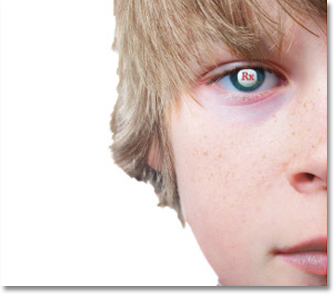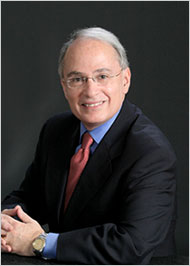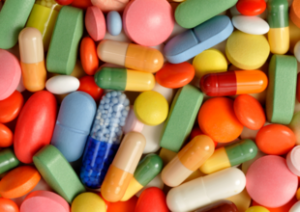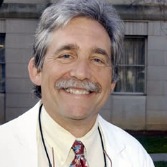Alternet – May 17, by Martha Rosenberg
Pediatric psychopharmacology is a billion-dollar business that sustains Pharma and Pharma investors on Wall Street.
The following is an excerpt from Born with a Junk Food Deficiency: How Flaks, Quacks, and Hacks Pimp the Public Health

Children are known to be compliant patients and that makes them a highly desirable market for drugs, says former Pharma rep Gwen Olsen
In his book Psychiatryland, psychiatrist Phillip Sinaikin recounts reading a scientific article in which it was debated whether a three-year-old girl who ran out into traffic had oppositional-defiant disorder or bipolar disorder, the latter marked by “grandiose delusions” that she was special and cars could not harm her.1
How did the once modest medical specialty of child psychiatry become the aggressive “pediatric psychopharmacology” that finds ADHD, pediatric conduct disorder, depression, bipolar disorder, oppositional defiant disorder, mood disorders, obsessive-compulsive disorders, mixed manias, social phobia, anxiety, sleep disorders, borderline disorders, assorted “spectrum” disorders, irritability, aggression, pervasive development disorders, personality disorders, and even schizophrenia under every rock? And how did this branch of psychiatry come to find the answer to the “psychopathologies” in the name of the discipline itself: pediatric psychopharmacology?
Just good marketing.
Pharma is wooing the pediatric patient because that’s where the money is. Just like country and western songs about finding love where you can when there is no love to be found at home. Pharma has stopped finding “love” in the form of the new blockbuster drugs that catapulted it through the 1990s and 2000s. According to the Wall Street Journal, new drugs made Pharma only $4.3 billion in 2010 compared with $11.8 billion in 2005—a two-thirds drop.2

Kids who start out with psychiatric diagnoses are not only lifers—they are expensive lifers usually shuttled into government programs that will pay for psychiatric drug “cocktails” that can approach $2,000 a month
Doctors have a “growing fear of prescribing new drugs with unknown side effects,”3explains the Journal, and the government is cracking down on illegal marketing. But also, private and government insurers are less willing to “cough up money for an expensive new drug—particularly when a cheap and reliable generic is available.4
It’s gotten so bad, AstraZeneca, whose controversial Seroquel® still makes $5.3 billion a year though it is no longer new, now conducts “payer excellence academies” to teach sales reps to sell insurers and state healthcare systems on its latest drugs.5No wonder Pharma is finding “love” by prescribing drugs to the nation’s youngest (and oldest) patients, who are often behavior problems to their caregivers, who make few of their own drug decisions, and who are often on government health plans.
“Children are known to be compliant patients and that makes them a highly desirable market for drugs,” says former Pharma rep Gwen Olsen, author of Confessions of an Rx Drug Pusher.6 “Children are forced by school personnel to take their drugs, they are forced by their parents to take their drugs, and they are forced by their doctors to take their drugs. So, children are the ideal patient-type because they represent refilled prescription compliance and ‘longevity.’ In other words, they will be lifelong patients and repeat customers for Pharma.”
Just as it used to be said in obstetric circles, “Once a cesarean, always a cesarean,” it’s also true that “once a pediatric psychiatric patient, always a pediatric psychiatric patient.” Few, indeed, are kids who start out diagnosed and treated for ADHD, bipolar disorder, and other “psychopathologies” who end up on no drugs, psychologically fine, and ready to run for class president. Even if they outgrow their original diagnoses—a big “if” with a mental health history that follows them—the side effects from years of psychoactive drugs and their physical health on mental, social, and emotional development take their toll. Even children on allergy and asthma drugs, which are promoted for kids as young as age one, are now known to develop psychiatric side effects according to emerging research.7

Drugging children is big business. The only losers are kids given a probable life sentence of expensive and dangerous drugs, the families of these children, and the taxpayers and insured persons who pay for the drugs.
Kids who start out with psychiatric diagnoses are not only lifers—they are expensive lifers usually shuttled into government programs that will pay for psychiatric drug “cocktails” that can approach $2,000 a month. What private insurer would pay $323 for an atypical antipsychotic like Zyprexa®, Geodon®, or Risperdal®, when a “typical” antipsychotic costs only about $40?8
Not all medical professionals agree with the slapdash cocktails. Panelists at the 2010 American Psychiatric Association (APA) meeting assailed Pharma for such “seat of the pants” drug combinations and called the industry nothing but a “marketing organization.”9In a symposium about comparative drug effectiveness, a Canadian doctor castigated the FDA’s Jing Zhang, who had served as a panelist at the symposium, for his agency’s approval of drugs for “competitive reasons” rather than for patient health or effectiveness.10Research presented at the 2010 APA meeting also questioned the psychiatric cocktails. When twenty-four patients on combinations of Seroquel, Zyprexa, and other antipsychotics were reduced to only one drug, there was no worsening of symptoms or increased hospitalizations (except in one case), and patients’ waist circumferences and triglycerides improved (a large waist circumference and high levels of triglycerides [fat] in the blood heighten one’s risk of developing diabetes and cardiovascular diseases).11The drug cocktails were not working and were making patients worse by creating new medical problems.
But pediatric psychopharmacology is a billion-dollar business that sustains Pharma, Pharma investors on Wall Street, doctors, researchers, medical centers, clinical research organizations, medical journals, Pharma’s PR and ghostwriting firms, pharmacy benefits managers, and the FDA itself—which judges its value on how many drugs it approves. The only losers are kids given a probable life sentence of expensive and dangerous drugs, the families of these children, and the taxpayers and insured persons who pay for the drugs.

The father of pediatric psychopharmacology, Harvard child psychiatrist Joseph Biederman, is often called Joseph “Risperdal” Biederman, because he is credited with ballooning the diagnosis of bipolar disorder in children by as much as fortyfold.
The father of pediatric psychopharmacology, Harvard child psychiatrist Joseph Biederman, is often called Joseph “Risperdal” Biederman, because he is credited with ballooning the diagnosis of bipolar disorder in children by as much as fortyfold.12In 2008, Biederman, a prolific author who has written five hundred scientific articles and seventy book chapters, was investigated by Congress for allegedly accepting Pharma money he didn’t disclose, and he agreed to suspend his industry-related activities.13After a three-year investigation, Harvard “threw the book” at Biederman and two other professors: they were required to “refrain from all paid industry-sponsored outside activities for one year and comply with a two-year monitoring period afterward, during which they must obtain approval from the Medical School and Massachusetts General Hospital before engaging in any paid activities.” What a deterrent. They also face a “delay of consideration for promotion or advancement.”14
When it comes to grandiosity, Biederman seems a lot like the three-year- old who ran out in traffic. He not only served as the head of the Johnson & Johnson Center for the Study of Pediatric Psychopathology at Massachusetts General Hospital, whose stated goal was to “move forward the commercial goals of J. & J.”—the facility was his idea! 15 According to court-obtained documents, Biederman approached J. & J. with the money-making scheme.16Biederman also promised the drug maker that upcoming studies of its popular child antipsychotic Risperdal would “support the safety and effectiveness of risperidone [Risperdal] in this age group.”17
The Johnson & Johnson Center for the Study of Pediatric Psychopathology netted a cool $700,000 in one year of operation, according to published reports, but a spokesman for Harvard Medical School said Harvard isn’t involved with Johnson & Johnson Center, even though the hospital where it operates, Massachusetts General, is a Harvard teaching hospital. “Harvard Medical School does not ‘own’ any of its teaching hospitals,” he told Bloomberg News. “While we are affiliated with them through academic appointments, all teaching hospitals are individually governed.”18
Many people are aware of such Pharma/academia arrangements, since the 1980 Bayh-Dole law allowed universities to operate as patent and profit mills for industries “commercializing and transferring” technology. But fewer realize how much taxpayer money is part of the play-to-pay. The government gave Biederman and a colleague $287 million in 2005—on top of their Pharma sinecures—to be administered by Massachusetts General Hospital. (No wonder Harvard keeps Biederman on.) Biederman also received $14,000 from Eli Lilly the same year he got a grant from the National Institutes of Health (NIH) to study Lilly’s ADHD drug, Strattera®. Why does the government fund researchers already funded by Pharma? Not only do these researchers not need our tax dollars; working for Pharma is an overt conflict of interest that contaminates scientific results.
Another master at playing both the Pharma and government sides of the street is psychiatrist Charles Nemeroff, former head of psychiatry at Emory University and also investigated by Congress for unreported Pharma money.
Nemeroff’s NIH grant was terminated after the probe, something that is rarely done with a government grant.19
According to the Chronicle of Higher Education, when Nemeroff was later under consideration to be the head of psychiatry at the University of Miami, the director of the National Institute of Mental Health (part of the NIH), Thomas Insel, MD, assured the medical school dean that if Nemeroff were hired, NIH money would follow, his prior problems notwithstanding. What’s a little congressional investigation? The reason for the largesse, according to the Chronicle, was that Nemeroff had gotten Insel a job at Emory when Insel lost his NIH position in 1994. Nor does the cronyism and revolving door stop there. Nemeroff serves on two NIH peer-review advisory panels that decide who else receives grant money, says the Chronicle, and Insel is personally involved with revising the National Institute of Mental Health’s “conflict of interest” rules.20
Insel is also known for advancing Pharma’s “SSRI deficiency/suicide hypothesis,” in which a decrease in antidepressant sales was—according to Pharma—resulting in suicides because people weren’t getting their drugs. “[The National Institute of Mental Health is] “looking at whether the decrease in SSRI [antidepressant] utilization might be associated with an increase in suicidality rather than a drop in suicide, and my expectation is that we may see an increase,” Insel told Psychiatric News, lamenting “the focus on risk and a neglect of benefit.”21
Antipsychotics for Everyone
When the atypical antipsychotics Zyprexa, Geodon, Risperdal, Abilify®, and Seroquel, for use in stabilizing schizophrenia, came into being in the 1990s, they were like the  credit default swaps and collateralized debt obligations of the pharmaceutical world. No one knew exactly how they worked, how long they would work, or what the final effects of their wide use would be (as with many withdrawn drugs, FDA gives approval on the basis of information from short-term trials). But they could make a lot of quick money easily compared with old-fashioned products; they had government’s backing, and everyone was doing it!
credit default swaps and collateralized debt obligations of the pharmaceutical world. No one knew exactly how they worked, how long they would work, or what the final effects of their wide use would be (as with many withdrawn drugs, FDA gives approval on the basis of information from short-term trials). But they could make a lot of quick money easily compared with old-fashioned products; they had government’s backing, and everyone was doing it!
Drug reps especially swarmed state agencies with many mentally disabled patients, including children. For example, Texas’s Medicaid program spent $557,256 for two months of pediatric Geodon prescriptions in 2005, according to court documents, and Geodon was not even approved for children at the time.22Eighty-five percent of the state’s Risperdal prescriptions were paid by the state government, court documents also show.23And Florida’s Medicaid program spent $935,584 for one year of Geodon.24One hundred and eighteen prescriptions for Geodon were written in one day, according to the Tacoma News Tribune, at Western State mental hospital in Washington State. Asked why Pfizer reps made almost two hundred visits to the facility in four years, Pfizer spokesman Bryant Haskins told the Tribune, “That’s where our customers are.”25
Mental institution psychiatrists were not the only ones targeted. United States Department of Veterans Affairs psychiatrists said in a survey that they were contacted an average of fourteen times per year by Pharma reps and were invited to attend company-continuing medical education seminars.26And court documents unsealed in South Carolina in 2009 show that Eli Lilly sales reps even used golf bets to push their atypical antipsychotic Zyprexa; one doctor agreed to start new patients on Zyprexa “for each time a sales representative parred.”27
But as state outlays for atypical antipsychotics grew twelvefold between 2000 and 2007, some states and whistle-blowers began bringing Pharma to court. In 2007, Bristol-Myers Squibb settled a federal suit for $515 million, brought by whistle-blowers in Massachusetts and Florida, which charged that the company marketed the antipsychotic Abilify for unapproved uses in children and the elderly, bilking taxpayers in the process.28 And the next year, Alaska won a precedent-setting $15 million settlement from Eli Lilly in a suit to recoup medical costs generated by Medicaid patients who developed diabetes while taking Zyprexa. Atypical antipsychotics are known to cause weight gain and glycemic changes that can lead to diabetes.29Soon Idaho, Washington, Montana, Connecticut, California, Louisiana, Mississippi, New Mexico, New Hampshire, Pennsylvania, South Carolina, Utah, West Virginia, Arkansas, and Texas took Pharma to court for the “prescribathon,” which hit the poor, the mentally ill, children, and the elderly the hardest.30
Of course, as with credit default swaps and collateralized debt obligations (or the cases of Bernie Madoff or BP’s Deepwater Horizon or Enron), there were voices of dissent about the atypical revolution if people chose to listen. A National Institute of Mental Health study of children ages eight to nineteen with psychotic symptoms found Risperdal and Zyprexa were no more effective than the older antipsychotic Moban, but it caused such obesity that a safety panel ordered the children off the drugs.31 In just eight weeks, children gained an average of thirteen pounds on Zyprexa, nine pounds on Risperdal, and less than one pound on Moban.
“Kids at school were making fun of me,” said study participant Brandon Constantineau, who put on thirty-five pounds on Risperdal.32
Other studies, like one on Risperdal in the British medical journal Lancet and one on Zyprexa, Seroquel, and Risperdal in Alzheimer’s patients reported in the New England Journal of Medicine, also found that atypicals work no better than placebos.33One study in the British Medical Journal found that Seroquel not only did not relieve agitation in Alzheimer’s patients, but that it “was [also] associated with significantly greater cognitive decline” than placebos.34As with Risperdal, the drug made patients worse.
“The problem with these drugs [is] that we know that they are being used extensively off-label in nursing homes to sedate elderly patients with dementia and other types of disorders,” testified FDA drug reviewer David Graham, MD, during a congressional hearing.35Graham is credited with exposing the dangers of Vioxx and other risky drugs approved by the FDA. “But the fact is, is that it increases mortality perhaps by 100 percent. It doubles mortality,” said Graham. “So I did a back-of-the-envelope calculation on this, and you have probably got 15,000 elderly people in nursing homes dying each year from the off-label use of antipsychotic medications. . . . With every pill that gets dispensed in a nursing home, the drug company is laughing all the way to the bank.”36
Just like Wall Street and banking lobbyist and cronies “advised” the government on how to write the credit default and derivative rules under which they would be regulated, Pharma helps states regulate—and buy—its brand- name drugs. An Eli Lilly–backed company named Comprehensive Neuroscience has “helped” twenty-four states to use Zyprexa “properly,” reports the New York Times.37“Doctors who veer from guidelines on dosage strengths and combinations of medications for Medicaid patients are sent ‘Dear Doctor’ letters pointing out that their prescribing patterns fall outside the norm,” it reports. Doctors are also notified if patients “are renewing prescriptions,” lest they have “setbacks in their condition.” One such program sends registered nurses to the homes of patients who are on expensive brand drugs to ensure “compliance”; that is, to make sure patients have not stopped taking the drugs.
Some states say they have saved money under Pharma’s guidance, but Wisconsin found that once it “placed restrictions on Zyprexa and three other antipsychotic drugs” and scrapped the Lilly-funded program, it lowered its antipsychotic bill by $4 million. 38
And then there’s the Texas Medication Algorithm Project, a “decision tree” developed by Pharma and Johnson & Johnson’s Robert Wood Johnson Foundation in 1995 to “help” the state buy its drugs. The algorithm rules required doctors to treat patients—surprise!—with the newest, most expensive drugs first, which ballooned Risperdal sales as well as other atypical antipsychotics.39
But in 2008, the Texas attorney general’s office charged Risperdal maker Janssen Pharmaceuticals, Inc., Johnson & Johnson’s antipsychotic drug unit, with fraud.40Janssen defrauded the state of millions, said a civil suit, “with [its] sophisticated and fraudulent marketing scheme,” to “secure a spot for the drug, Risperdal, on the state’s Medicaid preferred drug list and on controversial medical protocols that determine which drugs are given to adults and children in state custody.” In addition to lavishing trips, perks, and kickbacks on Texas’s mental health officials to win drug sales, and disguising marketing as scientific research, the attorney general’s office charged that Janssen “paid third-party contractors and nonprofit groups to promote Risperdal . . . to give state mental health officials and lawmakers the perception that the drug had widespread support.”41
Such faux grassroots support from phony front groups has been cited in other lawsuits against Pharma. Whistle-blowers charge that Pfizer funded the National Alliance on Mental Illness (NAMI) to serve as a “Trojan horse” to sell Geodon in a complaint that led to forty-three states receiving givebacks and the largest criminal fine ever imposed in US history—$2.3 billion in 2009. 42
The National Alliance on Mental Illness calls itself a “nonprofit, grassroots, self-help, support and advocacy organization of consumers, families, and friends of people with severe mental illnesses,”43but it has been investigated by Congress for undisclosed Pharma money and is considered by some to be a front organization. The Geodon complaint even cites jailed physician Richard Borison, who also worked with Seroquel and Neurontin, in the corruption.44
Of course, to lock in taxpayer funding of psychoactive drugs, especially for children, it takes more than “helping” state officials at the point of purchase (and sending zealous drug reps to state facilities where the “patients are”). Pharma also finances continuing medical education (CME) courses that reward credits doctors need to retain their state licenses. A CME course called Individualizing ADHD Pharmacotherapy with Disruptive Behavioral Disorders taught by the Johnson & Johnson–funded Robert L. Findling, MD, refers to Risperdal thirteen times.45Another CME course that promoted Seroquel was “taught” by AstraZeneca staff and Dr. Nemeroff but was scrapped after the Accreditation Council for Continuing Medical Education found it “lacked sufficient information about possible adverse effects of treatment with atypical antipsychotic drugs; and failed to emphasize sufficiently the efficacy of alternative treatments.”46 The course was called Atypical Antipsychotics in Major Depressive Disorder: When Current Treatments Are Not Enough.
Pharma doctors also spread confidence about the drugs by publishing in medical journals like a Johnson & Johnson–subsidized article that upheld the “long-term safety and effectiveness of risperidone [Risperdal] for severe disruptive behaviors in children” in the Journal of the American Academy of Child & Adolescent Psychiatry. Despite thirty-one recorded child deaths, the drug was found to be safe, according to the article, on the basis of a one-year study.47
Click here for a copy of Born with a Junk Food Deficiency: How Flaks, Quacks, and Hacks Pimp the Public Health.




SHARE YOUR STORY/COMMENT